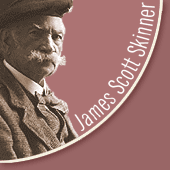




The Collection
Please select an image to view the full record details.
There are 900 records in the
collection.
prev 10 | 44 > 45 > 46 > 47 > 48 > 49 > 50 > 51 > 52 > 53 | next 10 of 90 pages
| Image | Title | Item Description |
|---|---|---|
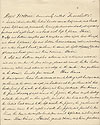 JSS0493 |
Royal Victoria, or Marshall's | This excerpt is from a series of notebooks compiled by Skinner and his own dance teacher, William Scott. The notebooks were published under the title, A Guide to Fashionable Dancing. Royal Victoria. Commonly called 'Marshall's'. 1. Ladies' chain, double; hands across half round, and back again to places;... |
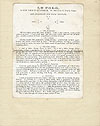 JSS0494 |
Le Polo | This excerpt is from a series of notebooks compiled by Skinner and his own dance teacher, William Scott. The notebooks were published under the title, A Guide to Fashionable Dancing. This version of Le Polo, 'a new French Quadrille', has been pasted into the notebook by the compilers. A diagram at the... |
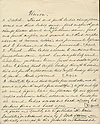 JSS0495 |
Page 1 of 2, Union Quadrilles | This excerpt is from a series of notebooks compiled by Skinner and his own dance teacher, William Scott. The notebooks were published under the title, A Guide to Fashionable Dancing. Each figure has a 'nationality'. Union. 1. Scotch. First and fourth ladies change places - second and third ladies... |
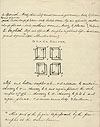 JSS0496 |
Page 2 of 2, Union Quadrilles | This excerpt is from a series of notebooks compiled by Skinner and his own dance teacher, William Scott. The notebooks were published under the title, A Guide to Fashionable Dancing. [continued from JSS0495]. 4. Spanish - Waltz chain half round (commencing at corners) - Waltz to places - top and... |
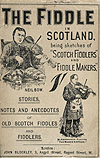 JSS0497 |
The Fiddle in Scotland, being sketches of 'Scotch Fiddlers' and 'Fiddle Makers', page 1 of 4 | Title page of The Fiddle in Scotland, by Alexander Murdoch, father of fiddler William Mackenzie Murdoch, who styled himself on Skinner. The drawing of Niel Gow is taken from Henry Raeburn's painting in the Scottish National Portrait Gallery, Edinburgh. Duncan McKerracher, illustrated at the bottom of... |
 JSS0498 |
Willie Blair. 'The Queen's Fiddler', p 1 of 3 | Page 1 of 3 of Alexander Murdoch's (see JSS0497) essay on Willie Blair, fiddler to Queen Victoria (see JSS0038). Blair (1794-1884) was born in Crathie, near what would become Balmoral Castle, the Highland retreat of the Queen and Prince Albert. Taught by his father, Blair was known for the 'enthusiasm'... |
 JSS0499 |
Willie Blair. 'The Queen's Fiddler', p 2of 3 | Page 2 of 3 of an essay on Willie Blair, fiddler to Queen Victoria at Balmoral. |
 JSS0500 |
Willie Blair. 'The Queen's Fiddler', p 3 of 3 | Page 3 of 3 of Alexander Murdoch's (see JSS0497, JSS0498, JSS0499) essay on Willie Blair, fiddler to Queen Victoria at Balmoral Castle (see JSS0038). Willie was not a great fiddler, but was true to himself. He used the 'Doric', the North-east Scots tongue, took snuff, and had a good sense of humour.... |
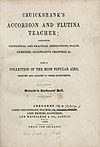 JSS0501 |
Title Page, Cruickshank's Accordion and Flutina Teacher, page 1 of 4 | Title page, page 1 of 4, Cruickshank's Accordion and Flutina Teacher. The accordion is now commonly used in Scottish dance music. This Aberdeen instruction manual was published in 1852, to appeal to those with the Victorian belief in self-improvement. The tutor supplied 'Theoretical and Practical Instructions,... |
 JSS0502 |
Cruickshank's Accordion and Flutina Teacher, page 2 of 4 | Page 2 of 4, Cruickshank's Accordion and Flutina Teacher. Diagram demonstrating how to hold the instrument. This accordion is much simpler and smaller than modern instruments. The players' fingers operated a series of key-like levers to play the notes. |
prev 10 < prev 10 | 44 > 45 > 46 > 47 > 48 > 49 > 50 > 51 > 52 > 53 | next 10 of 90 pages


Historic Collections · Kings
College · Old Aberdeen · AB24 3SW
Tel:(0)44 1224 274312 · E-mail: scottskinner@abdn.ac.uk
Page design by IT Services Web Team